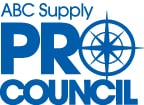“Roofing Contractor” Report Highlights Skilled Labor Shortage, Popular Materials and Technology
Each year, we look forward to reading Roofing Contractor’s State of the Industry Report. The report surveys residential and commercial contractors and distributors—including ABC Supply—and combines their feedback to recap the previous year and identify the trends and insights that will help contractors be successful in the future.
We highlighted some of the challenges and opportunities identified in the 2019 state of the industry report and asked the ABC Supply Pro Council for their take on these key topics.
The skilled labor shortage will continue to be a major challenge for roofing contractors.
 A strong industry and continued storm activity are increasing the demand for roofing jobs and continuing to put pressure on contractors to find skilled labor. To address this, many contractors are taking multiple approaches to hiring, including:
A strong industry and continued storm activity are increasing the demand for roofing jobs and continuing to put pressure on contractors to find skilled labor. To address this, many contractors are taking multiple approaches to hiring, including:
- Hiring subcontractors
- Asking for employee referrals
- Using online job postings or social media to help recruit younger workers
Another way the ABC Pro Council sees contractors trying to overcome the labor shortage is by getting involved with local initiatives, such as high school programs that teach trade skills and encourage young people to join the trades. We recommend that contractors reach out to local chapters of industry organizations or technical colleges to see if they’re leading any programs.
ABC Supply associates also report that many contractors are adapting more turnkey options, such as prefabricated materials—where components arrive to the jobsite already assembled—to lessen the amount of skilled labor needed on a job.
Construction prices rose 6.5 percent in the first three quarters of 2018, largely due to tariffs on metal.
The ABC Pro Council has noticed an increase in costs for some materials, and they understand that it can be challenging for contractors to relay price increases to their clients, especially if the bid they created is months old. Here are some tips if you’re struggling to have these conversations.
- Educate homeowners about the impact of inflation on the construction industry
- Add expiration dates to your bids. Should costs increase after the expiration date passes, you’ll have the opportunity to adjust the price if necessary
The price of raw materials is one factor that you can’t control, but building trust with customers will help you handle difficult situations, such as price increases, while protecting your relationships and reputation.
Steep-slope asphalt shingles were the top product used by residential roofing contractors in 2018.
 Roughly 71 percent of all survey respondents said they use asphalt shingles and that shingles made up about 30 percent of their entire sales revenue. The ABC Pro Council attributes the popularity of this product to the attractive benefits it has for both contractors and homeowners. For contractors, asphalt shingles are often readily available and easy to install. For homeowners, this type of product is a cost-effective, quality choice because it lasts 15–20 years. The ABC Pro Council has also seen impact-resistant and SBS shingles increasing in popularity.
Roughly 71 percent of all survey respondents said they use asphalt shingles and that shingles made up about 30 percent of their entire sales revenue. The ABC Pro Council attributes the popularity of this product to the attractive benefits it has for both contractors and homeowners. For contractors, asphalt shingles are often readily available and easy to install. For homeowners, this type of product is a cost-effective, quality choice because it lasts 15–20 years. The ABC Pro Council has also seen impact-resistant and SBS shingles increasing in popularity.
Single-ply roofing was the top product used by commercial roofing contractors in 2018.
A significant 88 percent of respondents said they use single-ply roofing, and 82 percent said they also use metal. The ABC Pro Council believes that single-ply roofing is popular because it’s so versatile. There are many colors available, and it can be installed in a variety of ways, like gluing or screwing onto a building. Single-ply roofing is also easier, cheaper and less messy to install than other products.
Drones are the most popular new technology used by roofing contractors.
About 22 percent of contractors said they are currently using drones, and nearly half the respondents said they plan to use drones within the next two years. This type of technology is increasing in popularity because it can help contractors with roof inspections and be an effective way to capture before-and-after photos for sales and marketing. The ABC Pro Council has also noticed that more insurance companies are adapting drones to help them assess storm damage.
More roofing contractors are also using moisture scanners to assess water damage on roofs. Prices for these traditionally expensive scanners have recently decreased, allowing more contractors to use them to evaluate a roof system and pinpoint problem areas.
No matter which statistics or trends you take away from the Roofing Contractor’s State of the Industry Report, one thing is clear: contractors are going to have a busy year. Check out the ABC Supply blog for tips on how to make 2019 your best year yet.
 The ABC Supply Pro Council consists of experienced associates from across the U.S. Its aim is to provide contractors nationwide with industry advice and insights to help them seize opportunities and overcome challenges they face as they manage successful businesses. Contractors can visit ABC Supply’s News & Events for additional tips and resources from the Pro Council.
The ABC Supply Pro Council consists of experienced associates from across the U.S. Its aim is to provide contractors nationwide with industry advice and insights to help them seize opportunities and overcome challenges they face as they manage successful businesses. Contractors can visit ABC Supply’s News & Events for additional tips and resources from the Pro Council.